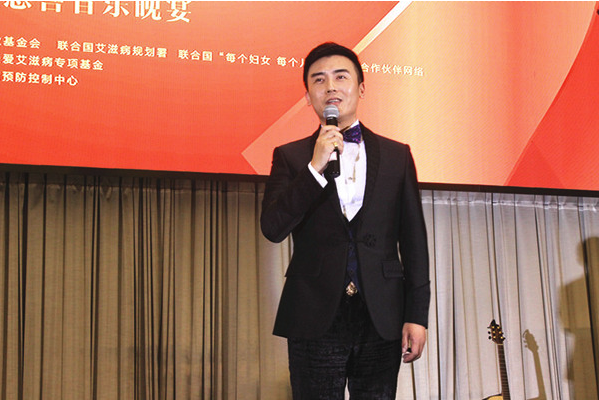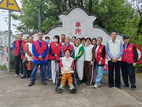Daniel Bian or Bian Bingbin, the founder of an AIDS prevention and care campaign, was appointed ambassador of the AIDS Prevention Education Project for Chinese Youth (APEPCY), a Chinese non-profit organization (NGO).
The independent observer of livelihood issues and social critic stated that the statistics about Chinese AIDS patients in 2016 revealed urgent social and bread-and-butter issues that needed attention.
Who are the custodians of AIDS teenagers who know little about sex?
One third of new AIDS infections in China in 2016 were adolescents. Statistics showed that 17,000 Chinese people from 15 to 27 were living with AIDS in 2016, and teenagers out of school accounted for at least eighty percent of that number.
Bian said that most of the new cases were from sexual contact, the primary route of transmission for AIDS, and mostly in a group that failed to receive sex education; the majority of them were youth.
In particular, teenagers blindly followed the trend of sexual openness in a society propelled by multiple values. The youth group who didn't receive any education were most at risk.
Although families and schools were their chief legal guardians, a large percentage of adolescents had no guardian due to contemporaneous factors including urbanization, being "left-behind," and the attack on the traditional family. Therefore, the solution was to help those young people get their legal guardians and let the latter assume legal responsibility.
Nobody is immune to HIV/AIDS.
Among Chinese AIDS patients, 27% of them were affected by sexual transmission between men and 68.5% through sexual intercourse between men and women. The traditional sexual transmission between both sexes was the leading factor.
The common view that homosexual conduct was the primary cause of AIDS is not true, Bian said. "Based on the data, anyone who has a sex life can be infected. This is absolutely not alarmist talk because almost seventy percent of AIDS sufferers have heterosexual activities."
Why did this happen? He answered that it was related to many social conflicts.For example, many couples have their own sexual partners after their marriages are essentially broken due to conflicts of interest; the youth don't have awareness of protecting their sexual rights; empty nesters have poor sexual practices owing to loneliness.
Sexual openness was becoming peculiar in China.
Two groups, the elderly and the youth, were among new HIV infections. It revealed that sexual openness penetrated the two groups.
The mainstream sex value that sex is based on responsibility and love was replaced by sexual hedonism and sexual pleasure. Sex is healthy when it is built on mutual responsibility and love. However, the phenomenon that sex is for amusement affected both older and younger people. Children have sexual entertainment owing to blindness and the elderly due to lonliness.
It's unfair to discriminate against AIDS patients.
In 2016, 17 million patients didn't get medical attention and 1 million died across the globe.
Despite HIV transmission and AIDS-related deaths being avoidable when patients take medicine, there were high rates of death and infection. The problem is that they failed to receive timely treatment.
The medical control and prevention work of AIDS has lagged: it's not timely. The two problems were related to social discrimination of AIDS. For instance, many people feel insulted if they are tested for the virus. The attitude stemmed from moral condemnation of AIDS patients. The condemnation was not fair because people without AIDS could not prove to be clean.
Moreover, the United Nations claimed that it was a basic human right for patients to be treated and respected. When patients are reluctant to go to a hospital because of the stigma, leading to delayed treatment, the society loses a safe environment and the virus spreads. Conversely, being tested and treated lowers the infection rate.
It is important to follow the second path and create an atmosphere without discrimination so unity can be formed.
- Translated by Karen Luo














